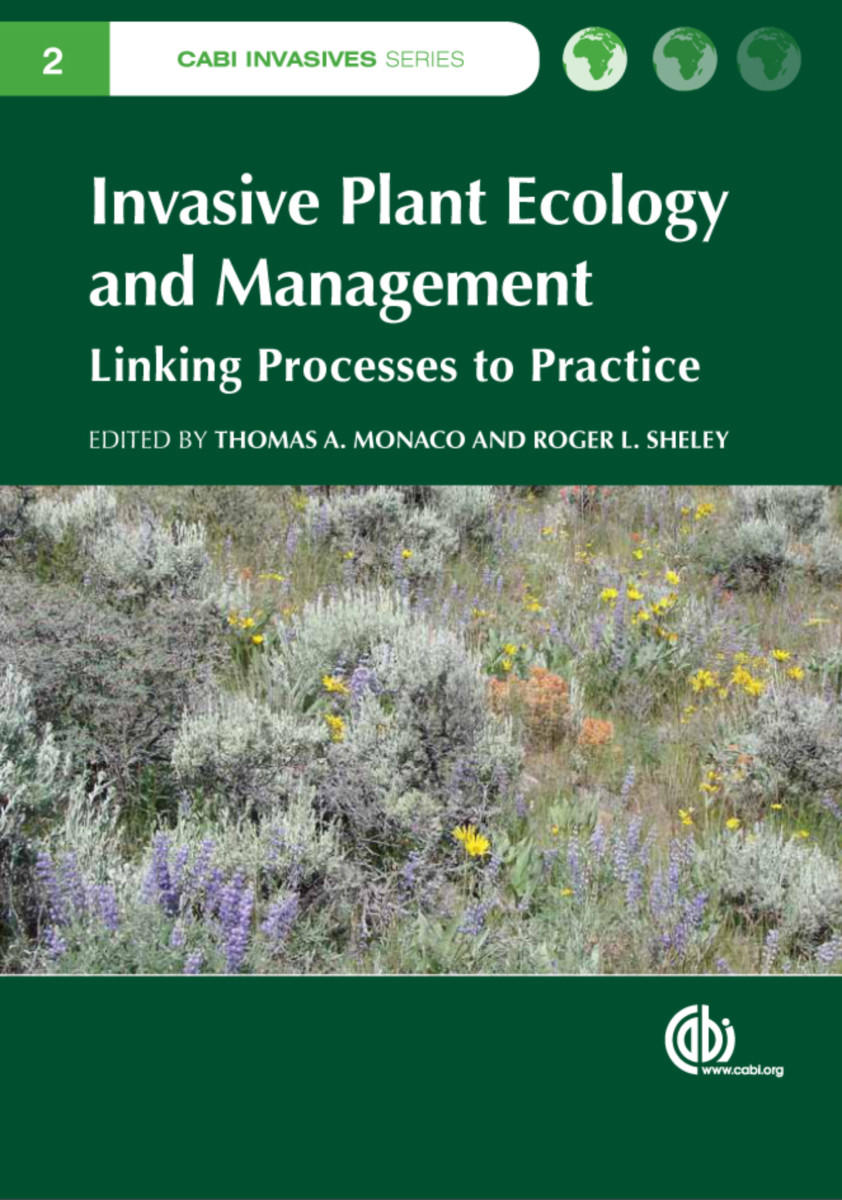Edited by Thomas A. Monaco and Roger A. Sheley
Hardback
April 2012
9781845938116
More details
- Publisher
CABI - Published
23rd April 2012 - ISBN 9781845938116
- Language English
- Pages 216 pp.
- Size 6.25" x 9.25"
- Images 27 illus
$191.15
Bringing together ecology and management of invasive plants within natural and agricultural ecosystems, this book bridges the knowledge gap between the processes operating within ecosystems and the practices used to prevent, contain, control and eradicate invasive plant species. The book targets key processes that can be managed, the impact of invasive plants on these ecosystem processes and illustrates how adopting ecologically based principles can influence the ecosystem and lead to effective land management.
PART I - Assessing ecosystem processes and invasive plant impacts
1) Managing invasive species in heterogeneous ecosystems
2) Linking disturbance regimes, vegetation dynamics, and plant strategies across complex landscapes to mitigate and manage plant invasions
3) Land-use legacy effects of cultivation on ecological processes
4) Resource pool dynamics: conditions that regulate species interactions and dominance
5) Invasive plant impacts on soil properties, nutrient cycling, and microbial communities
PART 2 - Principles and practices to influence ecosystem change
6) Weather variability, ecological processes, and optimization of soil micro-environment for rangeland restoration
7) The effects of plant-soil feedbacks on invasive plants: mechanisms and potential management options
8) Species performance: the relationship between nutrient availability, life history traits, and stress
9) Reducing invasive plant performance: a precursor to restoration
10) Revegetation: using current technologies and ecological knowledge to manage site availability, species availability, and species performance
Thomas A. Monaco
Thomas A. Monaco is at USDA-ARS, Forage and Range Research Laboratory, Utah State University.
Roger A. Sheley
Roger A. Sheley is at USDA-ARS, Eastern Oregon Agricultural Research Center.


